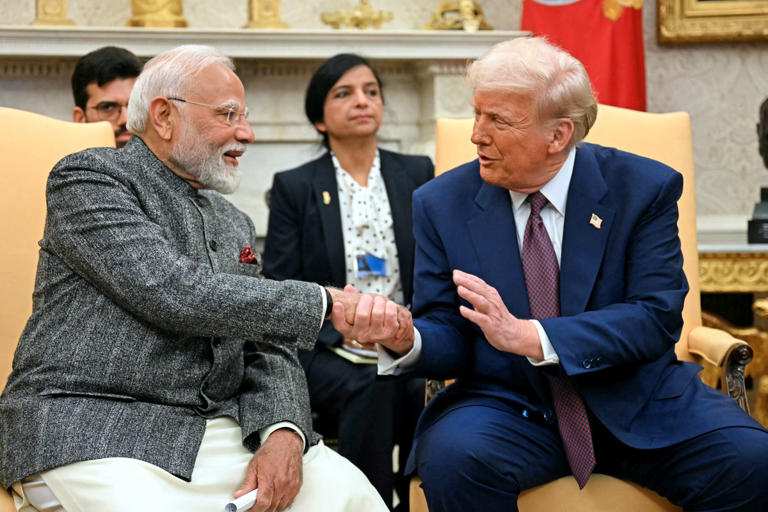Trump Slaps Tariffs on Asian Nations, but India Secures Exemption
Trump’s New Tariffs Target Asia
President Donald Trump announced fresh tariffs on 14 countries, mostly in Asia, effective August 1, 2025. The move aims to address U.S. trade deficits. Letters sent to leaders outlined rates from 25% to 40%.

Japan, South Korea, and Myanmar face steep duties. Trump warned against retaliatory tariffs, threatening higher rates. The policy revives his “America First” trade agenda.
Which Countries Face Tariffs?
The tariffs hit Bangladesh, Bosnia and Herzegovina, Cambodia, Indonesia, Japan, Kazakhstan, Laos, Malaysia, Myanmar, Serbia, South Africa, South Korea, Thailand, and Tunisia.
Japan and South Korea face 25% tariffs. Myanmar and Laos get the highest at 40%. Bangladesh faces 35%, while Cambodia and Thailand see 36%. South Africa and Bosnia face 30%. These nations were chosen for trade imbalances with the U.S.
Why India Escapes the List
India avoided Trump’s tariff hit due to ongoing trade talks. Trump said a deal with India is “close,” possibly within 24–48 hours.
The U.S. extended India’s tariff suspension until August 1. Earlier, a 26% tariff on Indian goods was reduced to 10% for 90 days. India’s absence from the tariff letters signals progress in negotiations. A bilateral trade deal could lock in lower rates.
Background of U.S.-India Trade Talks
U.S.-India trade relations have been tense but improving. In April 2025, Trump imposed a 26% tariff on Indian goods but paused it for negotiations.
India pushed for concessions on exports like textiles and agriculture. The U.S. seeks access to India’s dairy and genetically modified crop markets. Indian negotiators have resisted U.S. pressure on sensitive sectors. Recent talks in Washington show both sides nearing a compromise.
Why Trump Targets Asia but Spares India
Trump’s tariffs focus on Asian nations with large trade surpluses, like Japan and South Korea. He accuses some, like Cambodia and Laos, of aligning with China.
India, despite being a BRICS member, is seen as a strategic partner. Trump’s team views India as a counterweight to China in Asia. India’s lower tariff rate (10% currently) reflects this geopolitical alignment. A trade deal could further cement this exception.
The tariffs sparked global concern. Japan’s Prime Minister Shigeru Ishiba expressed regret but vowed to negotiate. South Korea plans talks to soften the blow.
China warned of retaliation, calling BRICS non-confrontational. Indian exporters cheered the tariff delay, seeing a trade advantage. Experts say India could attract manufacturing if the deal holds. Trump’s BRICS threat an extra 10% tariff looms over India, but talks may shield it.


 Principal Arrested for ‘Period Check’ in Thane School
Principal Arrested for ‘Period Check’ in Thane School  Trump Threatens Brazil with 50% Tariff Over Bolsonaro Trial
Trump Threatens Brazil with 50% Tariff Over Bolsonaro Trial  How an Indian Air Force Jaguar Crashed in Rajasthan’s Churu
How an Indian Air Force Jaguar Crashed in Rajasthan’s Churu  How Trump’s Policies Birthed Elon Musk’s America Party
How Trump’s Policies Birthed Elon Musk’s America Party  How Hakeem Jeffries Spoke 8 Hours to Challenge Trump’s Agenda
How Hakeem Jeffries Spoke 8 Hours to Challenge Trump’s Agenda  Why Trump’s Megabill Is Dividing House Republicans ?
Why Trump’s Megabill Is Dividing House Republicans ?